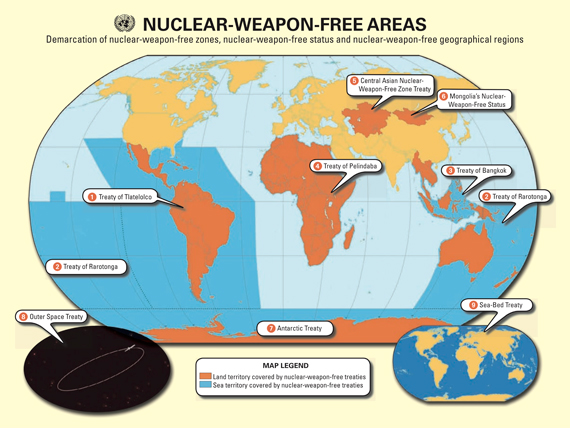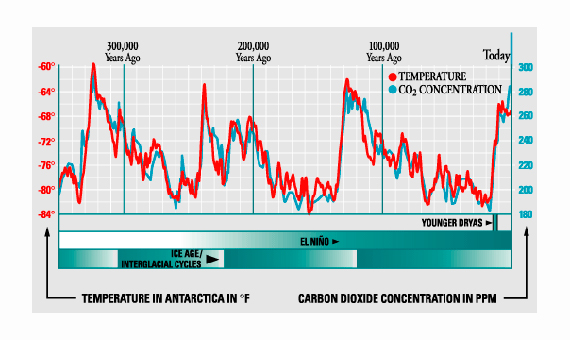2016 drew to an end with numerous wars raging across several of the world’s regions. In Europe the refugee crisis continues, while the incoming US administration is threatening to close the country’s borders. But war and its dire consequences are not the only problems facing humanity. Some are self-inflicted, while others are largely out of our hands. All could have drastic effects on our civilization, and could even culminate in the extinction of our species.
In the second half of the 20th Century nuclear conflict posed the chief threat to humanity, during the era of the so-called Cold War. Even today, 25 years after the disintegration of the Soviet Union and the Warsaw Pact, the five nuclear powers and the undeclared nuclear states (India, Pakistan, North Korea and Israel) have sufficient firepower to completely destroy our planet with just a fraction of their arsenals. After all, as was first observed by Roman playwright Plautus, and later popularized by Thomas Hobbes, “homo homini lupus“ (man is a wolf to his fellow man). Fortunately, much of the planet is free of nuclear weapons, according to the United Nations Office of Disarmament Affairs (UNODA), including outer space.

The threats to humanity posed by climate change
The damaging effects of climate change are becoming increasingly evident: biodiversity is in decline, coastlines are disappearing under rising sea levels, and environmental disasters threaten to disrupt the lives of hundreds of thousands of people. Seeking to curb these inherent dangers, in 2015 a total of 171 countries signed the Paris Agreement, a treaty that came into effect just a few months later. However, while the agreement aims to curtail the temperature increase at just 2 degrees (or, more ambitiously, 1.5 degrees) by the end of the century, the commitments made by the countries to date suggest a temperature jump of 2.7 degrees. This heralds disaster for humanity around 2050.
Our latest technologies are tracking, practically in real time, a massive Arctic ice melt, with temperatures this winter standing 20 degrees higher than the seasonal average. This is a dire scenario, not only threatening sweeping changes to numerous ecosystems on which we directly or indirectly depend, but also paving the way for multiple environmental disasters, as well as huge financial and, more dramatically, human costs.

Hurricanes and cyclones are becoming increasingly frequent and more violent, while they are also occurring in previously unaffected regions. Global rainfall patterns are changing, affecting crops that feed millions of people. Water management, key to our survival, will be one of the main conflicts, both locally and internationally. One of the more dramatic effects could be changes to monsoons in Southeast Asia, where a third of the world’s population lives. The habitat destruction faced by countless animals is driving larger mammals closer to extinction, while even the less visible bee population, which plays a critical economic role, equivalent to billions of euros annually, has plummeted due to the use of pesticides. 35% of the world’s largest living organism, the Great Barrier Reef, which underpins the region’s rich marine ecology, has died. Thus, overpopulation, exploitation of natural resources, many of which are finite; the use of genetically modified seeds and other transgenic products; and the burning of fossil fuels, driving up global temperatures, all pose new threats that could have major economic and human consequences.
Use and abuse of antibiotics
A third battlefront is the war on infections. After decades of saving the lives of millions of people, antibiotics are becoming less effective due to overuse in humans, as well as widespread usage in the livestock industry. In fact, a report from the Welcome NGO suggests that 700,000 people die each year due to resistance to antibiotics. This figure could rise to 10 million by 2050, while associated health spending could triple to a billion dollars, practically equivalent to the GDP of Spain.
Other pandemics caused by viruses present their own set of problems. We need merely recall the bird flu epidemic that struck in 2004, swine flu in 2009, and other more recent outbreaks such as Ebola and the Zika virus. Some 140 million birds died or were sacrificed in the first pandemic, costing Asian farmers alone (they were the worst affected) an estimated 10 billion dollars, not to mention the people who were killed by the virus. Meanwhile, according to the CIDRAP (Center for Infectious Disease Research Policy), the infection rate of swine flu reached 24% among human beings. The growth in intercontinental travel, distribution of agricultural and farming products, and production conditions are all set to exacerbate the problem going forward.

Machines and Artificial Intelligence
In just a few decades computers have driven profound changes to advanced societies, while also opening new opportunities for the poorest countries via almost unlimited access to information. However, this phenomenon has engendered technological dependence that could be threatened by both terrorist attacks and new forms of crime, including identity theft. The Internet, a critical resource that transmits a vast amount of information each and every day, could lose its neutral status and instead become an omnipresent tool of political and/or economic control. This would be reminiscent of bygone eras. Threats include censorship and political interference in scientific research, as seen 400 years ago when heliocentrism was deemed a crime. Current technology could make the so-called Galileo affair seem primitive, ushering in the nightmare scenario envisaged by George Orwell in his novel 1984.
Meanwhile, computers have permeated every area of our lives, driven by the so-called “Moore’s law”, which states that processor performance will double every two years. However, there are stark signals that this situation is changing, which could slow the pace of technological development. One possible solution to this is quantum computing, a technology still shrouded by numerous question marks.
Furthermore, the robotization of industrial output, but also of the services sector, is beginning to reshape the world’s labor force, causing the loss of non-specialized jobs. The main threat that this poses is the disappearance of the middle classes and the creation of technological elites, who benefit from everything the new society has to offer, including brand new medical treatments promising quasi-immortality, via CRISPR.
Artificial Intelligence has finally arrived: systems are now beginning to pass the so-called Turing Test. Thus, complex machines are capable of making decisions for us and are able to beat us at complex games such as chess and the Chinese game “Go”. In anticipation that one day these might malfunction or simply become too independent, major multinationals are now including algorithms in their programming equivalent to a “red button“; an emergency mechanism that would allow humans to seize back control.
A hostile universe
Our planet also faces challenges and threats that are difficult to predict. Among the most problematic are earthquakes. Many large urban developments stand along tectonic fault lines that are expected to suffer major earthquakes, such as the much-predicted “Big One” in California. Closer to home, the region of Naples sits over a supervolcano that seems to be stirring. A major eruption could inflict severe destruction in the surrounding area, and potentially cause climate abnormalities around the world. It wouldn’t be the first time: such a volcano erupted in Indonesia in the year 1815. It triggered the Year Without a Summer, with low temperatures and crop failures that affected millions of people.
The extraordinary beauty of cosmic phenomena have a dangerous flipside. Each and every day tons of cosmic materials fall to Earth in the form of small fragments. However, larger objects have occasionally affected the Earth, even causing the mass extinction that ended the era of the dinosaurs some 60 million years ago. NASA recently conducted trials aimed at mitigating the consequences of an impact, and is even developing a program to send spacecraft to intercept near Earth asteroids, although the project is threatened by the incoming Trump administration. Also, members of the European Space Agency recently ruled out backing research for such projects.
New technologies and an increasingly complex society offer possibilities that were unimaginable for our ancestors, as well as allowing us greater personal freedom. But, the dangers have grown commensurately. These threats can only be overcome if we engage in collective and individual responsibility, with a sound understanding of where we are heading and striving to safeguard universal human rights.
David Barrado Navascués
Astrobiology Center (INTA-CSIC)
Comments on this publication